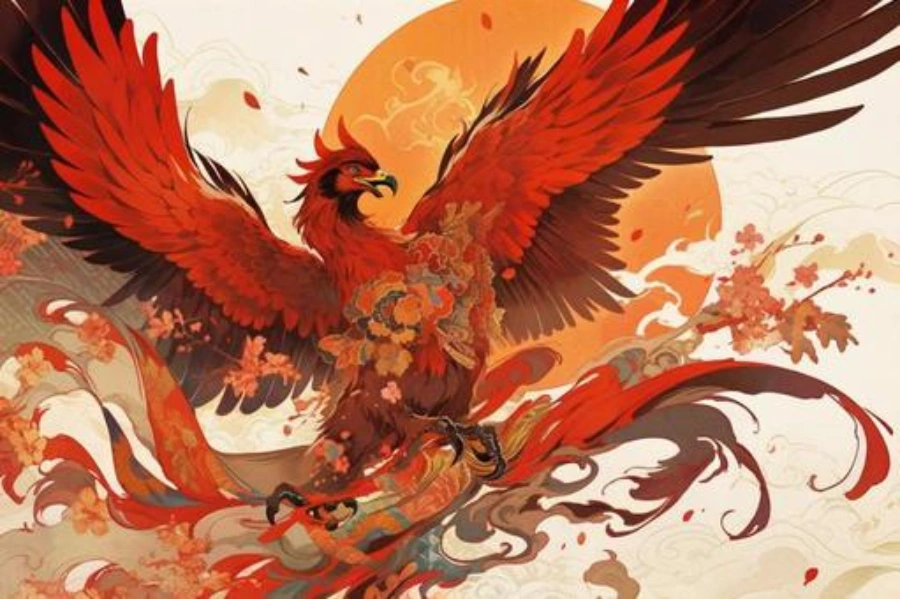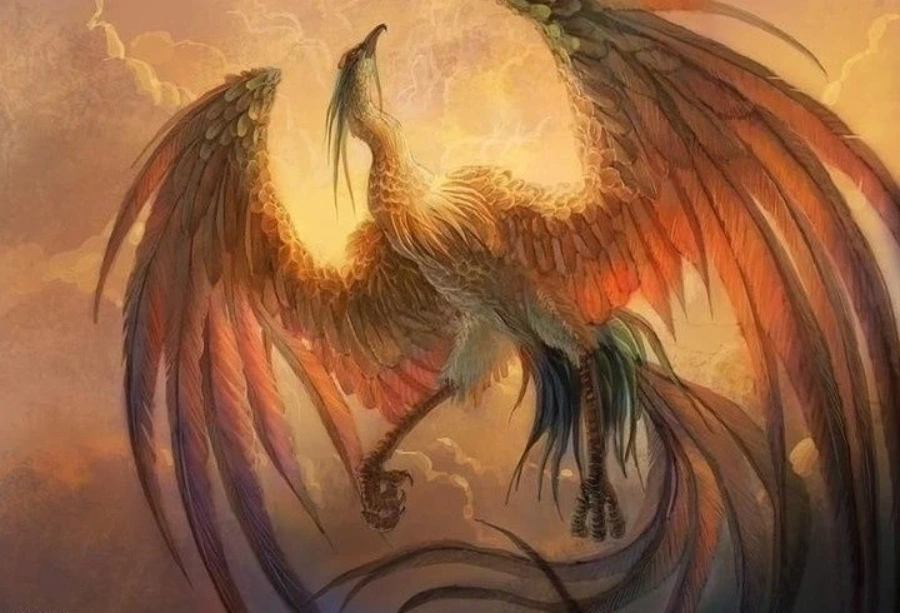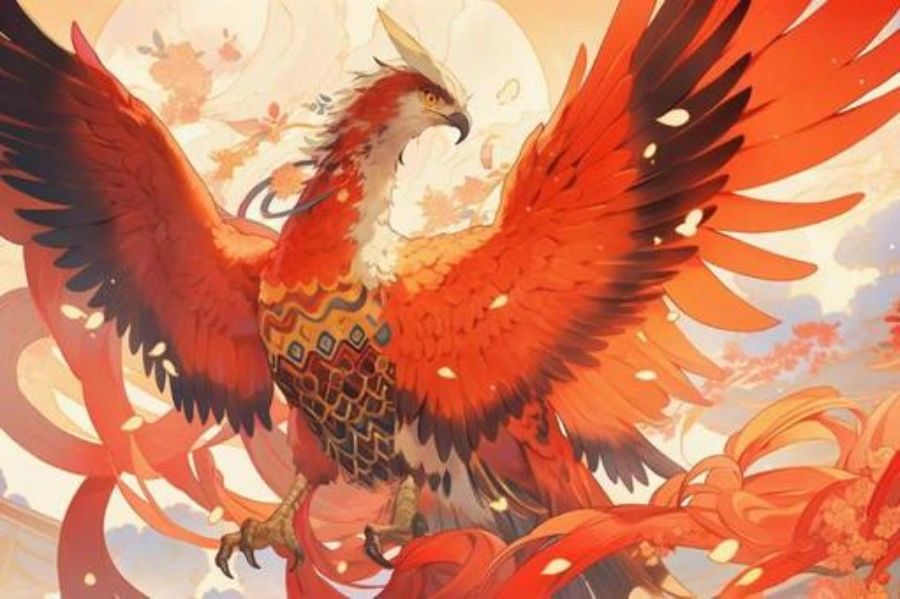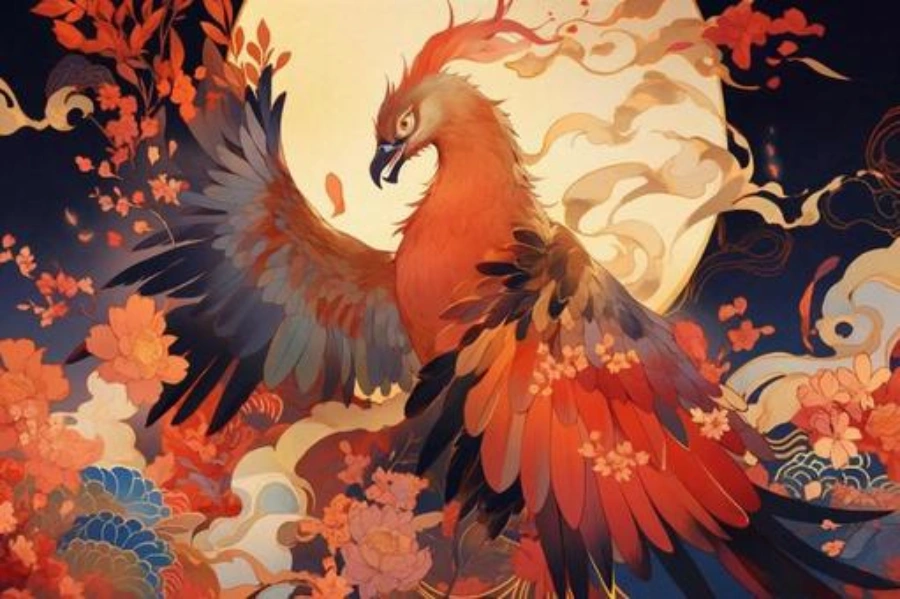
In the vast tapestry of Eastern mythology, the Four Symbols (Shijin) — four celestial beasts guarding the cardinal directions — hold a place of immense importance. Among them, Suzaku (the Vermilion Bird) reigns over the South, embodying summer, fire, and the blazing vitality of life.
This radiant figure is not only rooted in astrology and feng shui but has also left a lasting imprint on Japanese and Chinese culture for thousands of years. Join Kamicrew as we uncover the mysteries of Suzaku.
What is Suzaku?
Suzaku (朱雀 / すざく) is one of the Shijin, the Four Guardian Beasts in Taoist cosmology and East Asian astrology. Representing the South, Suzaku symbolizes fire, righteousness, and summer. Since ancient times, this vermilion bird has been revered as a divine protector, believed to shield capitals from evil forces and bring prosperity.
Translation and Etymology
The name Suzaku translates to “vermilion bird” or “crimson bird.” It is also known by variations such as sujaku, shujaku, or chūchue. Red is the defining element of this mythic creature — a color that embodies fire, strength, vitality, passion, and abundance.
Habitat and Diet
Unlike mythical creatures tied to mountains, forests, or seas, Suzaku dwells in the southern skies, spanning seven of the twenty-eight Chinese lunar mansions. Naturally, as a celestial being, Suzaku does not feed in a literal sense. Its “sustenance” comes from its association with the element of fire, the sun’s brilliance, and the scorching heat of summer.
Latest blog this week: Oni: The Fierce Demons of Japanese Folklore and Mythology
Appearance
Suzaku is often depicted as a giant red bird resembling a phoenix, with feathers blazing like fire, wide-spread wings covering the heavens, and a regal crest crowning its head. The stars themselves were believed to form different parts of Suzaku’s body — its wings, crown, and magnificent tail — painting its image across the night sky.

Personality and Behavior
Unlike demons or vengeful spirits, Suzaku is seen as a benevolent and noble guardian, representing virtue and righteousness. It governs fire, heat, and summer, protecting humankind from malevolent southern forces. Yet, like fire itself, Suzaku embodies a dual nature: it can nurture life and vitality, but also unleash destructive power — a reflection of the balance within nature and the cosmos.
Read more: Toirenoahanakosan: The Japanese Urban Legend of the Haunted School Bathroom
Cultural Significance
In Japanese history, Suzaku’s influence extended beyond belief into urban planning and architecture. Ancient capitals such as Fujiwara-kyō, Heijō-kyō, and Heian-kyō featured a great southern gate called Suzakumon (Suzaku Gate).
The grand avenue stretching north from this gate into the heart of the city was named Suzaku Avenue, symbolizing the bird’s role as protector and guide. Suzaku also appeared in tomb murals, pottery, and paintings as a powerful talisman for peace and prosperity.

Suzaku in Modern Associations
Today, Suzaku remains alive in anime, manga, video games, and popular culture. The fiery vermilion bird often symbolizes strength, justice, and eternal energy. While sometimes confused with the Chinese phoenix (hōō), Suzaku retains its distinct identity as the guardian of the South, forever tied to the blazing sun and the vitality of summer.
Suzaku is not only a symbol of fire, summer, and integrity in mythology, but also a powerful source of inspiration for modern art and fashion.
Related blog: Tamamonoma: The Legendary Nine-Tailed Fox of Japan 2026
At Kamicrew, we channel Suzaku’s blazing spirit into our unique designs — blending Eastern cultural essence with contemporary style. Each piece serves as a reminder of inner strength, explosive energy, and the drive to rise higher.

You might like: Gashadokuro: The Terrifying Giant Skeleton of Japanese Folklore 2025
Final Words
Suzaku is more than just an ancient legend — it is a timeless cultural symbol. From the southern skies of ancient China to the gates of Japan’s imperial capitals, from Taoist cosmology to modern-day anime, the Vermilion Bird continues to burn brightly as an everlasting flame in human imagination.
If you’re fascinated by legends like Suzaku, don’t miss the other stories on the Kamicrew blogs, where we bring to life the tales of yokai, the Four Symbols, and the mysterious icons of Japan.





